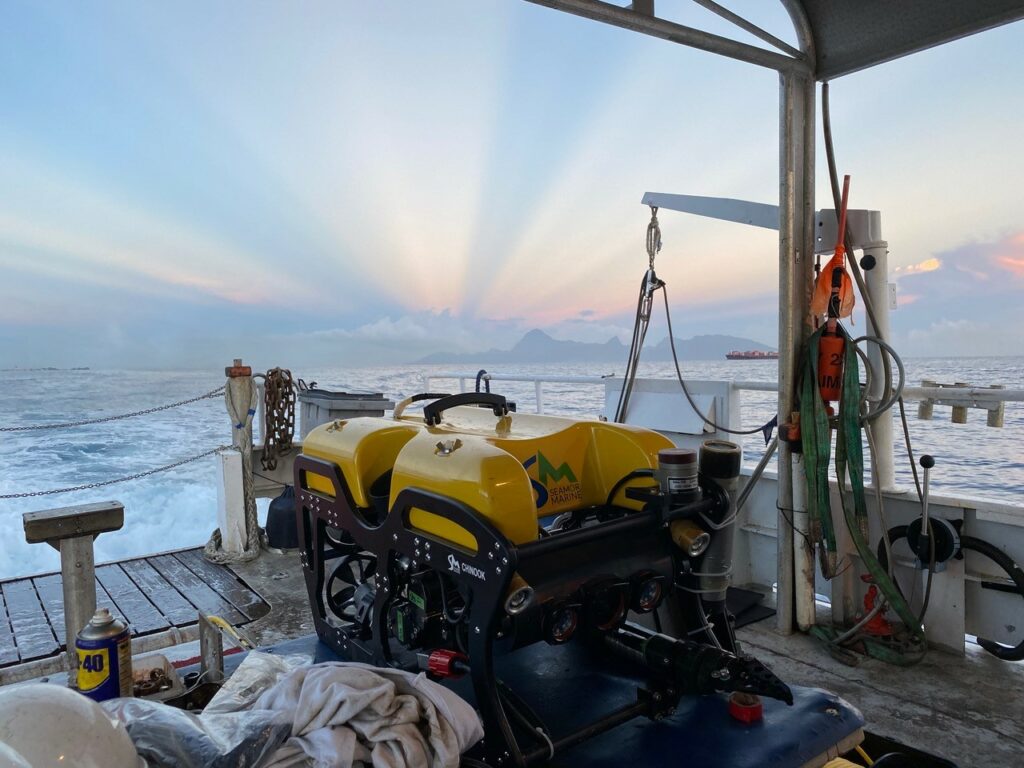Marine tourism is booming as technology and innovation offer new ways for wreck divers, historical researchers, and recreational treasure hunters to explore our underwater world. From exciting discoveries beneath the Arctic ice to the dazzling biosphere of tropical reefs, the promise of secrets held by the ocean is quite simply irresistible.
Perhaps no other class of robotic instrument has contributed more to these endeavours than remotely operated vehicles (ROVs) such as SEAMOR Marine’s Chinook ROV. Beloved by both industry operators and recreational pilots, the Chinook ROV offers a compact, transportable, and reliable option for marine exploration at a competitive price-point. Equipped with six powerful thrusters and approved for dive depths of up to 600 metres, it offers exceptional subaquatic access to both inland marine environments and coastal sub aquatic environments. Add to this an impressive ease of deployability by one or two crew members, and the intrepid Chinook ROV pilot is set to go anywhere.
First, to the tropical paradise of Malaysia where T7 Global owns and operates several Chinook ROVs. While most of us love soaking up the sun on a white-sand beach, elevated heat levels wreak havoc on electronics, causing their internal power grid to fade or “brown out.” T7 operators found that tropical temperatures were triggering heat sensor alarms on their Chinook ROVs and diagnostic reports indicated that unit power was reduced by as much as 20%. For the purposes of operating in water temperatures as high as 29℃ – not a problem typically faced by operators in Canada’s frigid north – the SEAMOR Marine product development team designed a customized heat sink. By running a series of diagnostic tests, specific electronic components were identified as being most affected by the higher temperatures. The standard heat sink was then customized and adapted to optimize heat transfer from these components, resulting in the unit operating at full capacity with no heat sensor warnings triggered. Through dynamic collaboration with T7, the team responsively adapted the Chinook ROV for optimal use in the balmiest of climates.
Perhaps no other story highlights the unwavering durability of SEAMOR Marine’s ROVs than that of a recreational operator exploring a wreck at the bottom of Lake Michigan. After an overly ambitious pass through the wreck of the Senator, which went down in 1929, the ROV tether was tangled and forced the pilot to abandon the unit submerged there at the wreck site. Lost at a depth of 134 metres, the ROV sat at the bottom of the lake for eight years, patiently awaiting recovery after multiple unsuccessful attempts. In 2022, it was finally recovered and found to still be in working condition, despite spending nearly a decade underwater. So secure and robust was the housing chamber and electrical components that the unit started up immediately after a well-needed powerwash.
Yet the most rigorous test for any ROV is its performance in ocean environments. Corrosive saltwater, powerful tides, and unpredictable weather patterns all contribute to the multifaceted challenges of exploring the mysteries hidden beneath the sea. Spin the globe again to Tahiti where Copetech-SM deployed its Chinook ROV to support the installment of a revolutionary new seawater air conditioning (SWAC) system at the French Polynesia Hospital Centre (Figure 1). SWAC uses the natural temperature differences between the ocean and land to provide up to 90% savings in energy costs for keeping buildings cool, essential for both patients and visitors. Beyond the benefits of staying cool through the sweltering summer heat, this revolutionary system provided an economical green-energy option for the island community where power generation can be not only costly but detrimental to the local flora and fauna, which make it an attractive tourist destination in the first place. Most critically, the Chinook ROV provided high-quality video feed throughout the installment process for essential general visual inspections, increasing the efficiency of the project and shielding human divers from the many potential hazards of industrial diving.
Finally, to Canada’s Arctic north where recent historical discoveries such as the location of Franklin Expedition’s ships Erebus and Terror have spurred renewed interest for historical researchers. Vastly different environmental conditions from the hot-climate examples explored so far, the Chinook ROV has proved to be equally reliable in multiple recovery and inspection operations conducted in Arctic conditions under the ice. One such project was a special testing operation conducted by the Winnipeg Police Service at West Hawk Lake in Manitoba (Figure 2). Despite sub-zero temperatures, the risk of ice buildup, and the claustrophobic challenges of navigating under the ice, the exceptional design of the Chinook’s mechanical and electrical components proved just as capable and reliable despite the Arctic conditions.
Perhaps we will never know all the secrets held within the ocean’s depths, whether beneath the crystalline Arctic ice or offshore from pristine beaches of white sand, but that is unlikely to deter explorers, researchers, and treasure-hunters from trying. As highlighted here, SEAMOR Marine’s Chinook ROV has proven exceptionally reliable, durable, and adaptable in a wide array of vastly different environmental conditions and climates, making it an ideal unit for those intending to answer those questions. Wherever pilots have a passion to explore, the Chinook ROV is ready and willing to give them an exciting glimpse of the mysteries hidden below the waves.

